In This Issue:
 By Tim Birdsong, Chief of Habitat Conservation, Inland Fisheries - TPWD
The official state fish, Guadalupe Bass, has been restored to the South
Llano River. Guadalupe Bass are endemic to the South Llano River and other
clear, spring-fed rivers of the Texas Hill Country. They are threatened by loss
of habitat and hybridization with non-native, introduced Smallmouth Bass that are
native to the Great Lakes of North America and portions of the Ohio, Tennessee,
upper Mississippi, and Saint Lawrence rivers. Smallmouth Bass have been
introduced throughout North America, Africa, and Eurasia to enhance sport
fishing opportunities.
This conservation success story for Guadalupe Bass begins with an ill-fated,
experimental introduction of Smallmouth Bass to the South Llano River in
1958-1960. The introduction proved unsuccessful in establishing a
self-sustaining Smallmouth Bass fishery, but resulted in an unforeseen and
unintended consequence of creating a hybrid population of Guadalupe Bass and
Smallmouth Bass. This hybridization went unnoticed in the South Llano River
until similar situations resulted from stocking of Smallmouth Bass in other
Hill Country rivers.
In 1974-1980, Smallmouth Bass were stocked by Texas Parks and Wildlife
Department (TPWD) in the Blanco, Guadalupe, Medina and San Gabriel rivers, and
in Cibolo and Onion creeks. Once hybridization was detected and threats to
Guadalupe Bass were recognized, TPWD ceased efforts to establish Smallmouth
Bass fisheries in Hill Country Rivers and instead began to devise a strategy to
prevent the local extirpation and possible extinction of Guadalupe Bass. Initial
conservation efforts included establishment of a refuge population of
genetically-pure Guadalupe Bass in the Sabinal River in 1988. In 1992, TPWD
initiated a Guadalupe Bass hatchery program that has since produced and stocked
2,355,807 Guadalupe Bass in Hill Country Rivers. TPWD also partnered with
local landowners, non-governmental organizations, fishing clubs, river
authorities, and other partners to restore and preserve habitat conditions for
Guadalupe Bass in rivers throughout the Hill Country.
In 2010, TPWD focused its attention on the South Llano River and the hybrid
population that resulted from the historic Smallmouth Bass introduction. In
partnership with numerous local cooperators, a plan was hatched to restore
Guadalupe Bass to the South Llano River. Between spring 2011 and spring 2017,
more than 700,000 genetically-pure Guadalupe Bass were stocked in the South
Llano River. Today, less than 2 percent of the Guadalupe Bass population
now consists of hybrids.
|
 In addition to the South Llano River stocking program, project cooperators organized river conservation workshops attended by approximately 750 landowners and local community partners in the watershed. Over 78,000 acres of ranchlands implemented stewardship practices to help preserve fish habitats. Restoration projects in the watershed restored 7,754 acres of spring, stream and riparian habitats, directly benefiting water quality and habitat conditions for Guadalupe Bass. These and other conservation efforts in the South Llano River watershed have successfully restored Guadalupe Bass populations and helped promote local stewardship practices that will ensure the river is able to sustain Guadalupe Bass populations into the future. Learn more about efforts to conserve Guadalupe Bass in the South Llano River or watch this video produced by TPWD a few years ago featuring former TPWD Angler Education Instructors Guy Harrison and Mike Andrews.
Photos in article by TPWD.
|
Back to Top
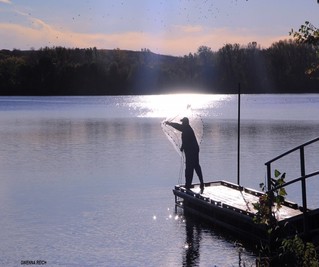 By Greg Akins, Aquatic Education Training Specialist - Houston
The cast net dates back to 177 BC. Oppian of Anazarbus, a 2nd century Greco-Roman poet, wrote Halieutica a poem about fishing. He describes in his writings various means of fishing including the use of cast nets from boats. From then until now, cast nets have managed to stand the test of time in the world of fishing.
Many people do not know how to use them, throw them, or understand the laws that govern cast nets. Here is some information for our readers in Texas (above all things get ye understanding)
Recreational anglers use cast nets to gather live bait. There are several styles and sizes of cast nets. Cast nets have different mesh sizes; different types of weights (metal or plastic) and weight sizes; others have different draw styles, either closing from underneath or above the net.
As most Texans know, “size” matters. Texas cast net regulations state:
• May not be greater than 14’ feet in Diameter
• Legal only for taking nongame fish and other aquatic animal life including, crabs, crayfish, and shrimp.
• In saltwater, nongame fish may be taken for bait purpose only.
Practice throwing the cast net on land before heading to the water. To throw the net:
- Make
sure you have stable footing.
- Step
on the leash loop. (Safety best practice
– you never know where or what the net will land on [like a shark!])
- With
the net gathered, use your non-dominant hand to hold the center of the net; with your dominate hand grip the outer edge
of the net and spread it out from the center.
- Turn
or twist your upper body backwards in the direction of the net’s outer edge,
keep your feet planted and spin your body and the net forward releasing both
hands.
The goal is to open the net as wide as possible in the air while releasing it with both hands simultaneously from one end as it’s slung in the air in one smooth release. For additional help, watch a how-to video online.
Because you can’t always control what you catch with a cast net, you may catch both gamefish and non-gamefish. Remember as stated above, if you catch nongame fish with a cast net and use it for bait --that’s great. With the exception of shrimp, crayfish and crabs, you can’t use a cast net to catch game or nongame fish for the purpose of eating.
Texas anglers can be sure of one thing: cast nets are great bait catchers but are bad fish catchers! Above all, understand ye the laws!
Photo courtesy of Gwenna Reich
|
Back to Top

By Edd Goodson, Angler Education Certified Instructor
Years had passed and I wasn’t sure I would ever have
grandkids. I had four kids so the odds should have been in my favor, but for
one reason or another, it just wasn’t happening. Then it did! Born in San
Francisco, I feared the miles that separated us would keep them from really
getting to know me. Thanks to today’s high tech, I have been able to watch them
grow and communicate with them personally via the marvel of video calls. The
video calls have filled in the gaps and kept me real to them. Kudos to bits and
bytes!
At age five I gave them their first fishing gear, pink
princess and blue super hero fishing rods. I knew it might be pushing five year
olds to introduce them to angling arts at such a young age, but I had been
dreaming about the day I would take them on their first fishing adventure and
couldn’t endure the wait. They were excited about the little rods and it didn’t
take them long to figure the casting part out. So right then, in my mind, I
started planning their first fishing trip with grandpa when they visited the
following summer.
Man was I excited! I had made arrangements to take them to a
ranch near Cleburne, Texas that had a lake full of healthy Coppernose Bluegill.
These fish were so big and strong I was a little concerned they might scare the
kids with their frantic hard pull. We talked about the trip, about catching
fish, practiced casting, tried on life jackets for a good fit, talked about
having to get up really early and even watched some short fishing videos. It
seemed they were getting excited too.
|
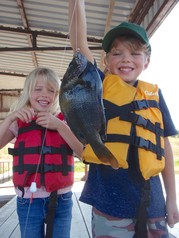
The night before our adventure we laid out their fishing
clothes and tackle. I had taken them shopping earlier and paid way too much for
matching fishing vests and hats for them. Once they were tucked in, I rechecked
my list of tackle, worms, white bread, snacks, water, sunscreen, first aid kit and
of course cameras. I was really excited!
When I opened the door to their bedroom the next morning
they were already getting dressed. The sun was just breaking over the hilltops
as we drove through the ranch gates. It was perfect. As we headed to the dock
where they would fish we talked about keeping our life jackets on and I explained
to the grandson that the mud daubers darting around the dock were really not
out to get him.
I watched the granddaughter wrinkle her nose in dismay as I
skewered fat Canadian night crawlers onto their hooks. She was first to get her
bait in the water, grandson still had an eye on the wasps, and immediately her
bobber disappeared.
It was happening, that moment I had imagined for so long was
unfolding before my eyes. I laughed; granddaughter squealed, grandson forgot
the marauding wasps and watched his sister’s struggle with, in his eyes, a
giant fish. We finally got the fat eleven-inch bluegill on the dock and in
hand. I could tell by the doubtful smile on granddaughter’s face she was not at
all interested in holding it. Once I had it unhooked and held secure in my hand
she did want to touch it and did with a great deal of precaution. We took a
couple of photos of the two of them admiring the catch and then I tossed it
back in the lake. I recall the surprised looks on their faces when I did that.
I had neglected to talk to them about not keeping the fish. After that fish it
was accepted as a normal thing to do.
I turned to my grandson and said, “Ok boy it’s your turn”. An
ear-to-ear smile let me know he was glad to be next. Far beyond the hour I
expected their interest to last, the two of them kept me busy baiting hooks and
releasing fish, laughing out loud at their struggles with the bluegills and the
smiles on their faces. The grandson’s proud smile as he hoisted his biggest
bluegill for photographs with his sister looking on with her “this is fun but
I’ll keep my distance from that fish” look, convinced me they were having an
excellent adventure. Recently, during a video call with them, I asked if they
wanted to go fishing again while they were in Texas this summer. A resounding
and enthusiastic YES convinced me that our first trip was only the beginning of
many more favorite outdoor Texas memories. I am thankful for these bytes and
bites.
Photos in article courtesy of Edd Goodson.
|
Back to Top
by Karen Marks, Aquatic Education Manager
As we cast our lines into 2018, I am delighted to see the accomplishments of our volunteers for our fiscal year that ended in August 2017. You reached over 76,000 youth and adults and documented 20,698 volunteer hours, all in 12 months and with a major hurricane and flooding. WOW!
As many of you know our Aquatic Education program is primarily funded with a match of your volunteer hours through the Dingell-Johnson (DJ) Act of 1950 also known as the Sport Fish Restoration Act. In addition to aquatic education, these federal funds are also used to improve and manage aquatic habitats and fisheries resources. For those of you following the Children in Nature movement over the past decade you know that everyone, youth and adults, benefit from being outside.
Now, a new bipartisan bill Recovering America’s Wildlife Act, H.R. 4647 to proactively conserve America’s fish and wildlife for future generations has been introduced. The proposal would redirect $1.3 billion in existing royalties annually from energy and mineral development on federal lands and waters, money not currently earmarked for any specific fund or purpose. Taxpayers would not be required to pay more, but would redirect funds to invest in fish and wildlife conservation. “For Texas, the Recovering America’s Wildlife Act would mean transformative change for people and wildlife, the kind of breakthrough that comes once in a generation," said Carter Smith, Texas Parks and Wildlife Department executive director. More information about the Recovering America’s Wildlife Act is available at www.OurNatureUSA.com
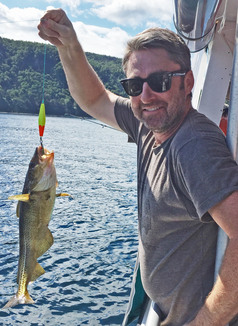 On the local front, please join me in welcoming our newest team member, Aquatic Education Training Specialist for Central Texas, Adam Comer. Adam will start on February 12th. He grew up with a love for the outdoors and fondly remembers his first fish caught – a Goggle-eye on the Buffalo River, Arkansas. These experiences led Adam to pursue and earn a bachelor’s degree in geography with an emphasis on resource and environmental studies from Texas State University. As an AmeriCorps volunteer, he worked for the Forest Service in the Cascade Mountains, Washington and in Alaska in conservation and education. He discovered his passion for teaching, tutored junior high students and led developmentally disabled teens as a work crew supervisor, while continuing to explore the wilds of Alaska. Adam also worked as a high school Instructional Aide and US History Teacher in Phoenix, while earning his master’s degree in education from Arizona State University. He returned to Texas and worked as an environmental educator at Austin Youth River Watch for the past nine years. While at River Watch, Adam mentored and led hands-on activities in aquatic science, ecological restoration, and outdoor adventure for urban high school students and the community. At home or adventuring, Adam enjoys making memories with his lovely wife, three dogs, family and friends.
Photo courtesy of Adam Comer.
|
Back to Top
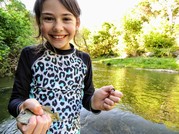
By Trevor Hance, Angler Education Certified Instructor
Mention metamorphosis to elementary school
students and most minds immediately migrate to Monarch butterflies, which makes
me feel oddly incomplete…
As the Coordinator for Enrichment and the
Environment at Laurel Mountain Elementary (Round Rock ISD) and Volunteer Angler
Education Instructor with TPWD, I’m continually exploring ways to combine
conservation-based experiences with the state’s learning standards. Last year I
carved a path through the elementary curriculum “through the eyes of a
fish.” The most popular unit of the year
(and my favorite) was teaching metamorphosis by tying flies.
Texas waters offer a rich variety of options
for anglers, meaning there are lots of “favorite fish” and “favorite bugs” for
students to discover. Giving students options personalizes learning, and
authentic experiences create committed conservationists and lifelong
environmental stewards.
Our fly-tying sessions began with a
Wooly-Bugger, Hare’s Ear Nymph, and simple foam hopper. At first, students were a little confused by
the vises on their desks, with one student later confessing he was worried the
vises were there to hold actual insects we would be dissecting “with all of
those weird little tools.” The class was
relieved to learn we were “creating” insects intended to reflect patterns in nature.
|
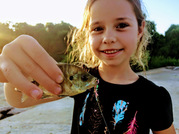 During the first session, students diligently followed each step to make sure they didn’t miss anything. Soon, students were skipping recess to grab a vise and some materials to create “mutant flies” that had two heads or seventeen legs. It was fun to see them explore and reinforce their learning. Many students caught their First Fish on a non-mutant pattern they tied, recognizing the relationship between “the hatch” and life-stages when making their fly selection.
I’m about ready for that last Monarch to boogie on down to Mexico so we can get back to telling the complete story of metamorphosis.
Photos in article courtesy of Trevor Hance.
|
Welcome to our new instructors! We are delighted to have you join our team!
We appreciate everyone who taught this year but especially those who braved the crazy Texas weather - whatever season it was. We recently heard from the Dallas Fly Fishers who taught high school students fly fishing in freezing temperatures in January when everyone was home on the ice day! We want to award them a virtual polar bear patch!
We continually post new workshops. If you know someone who wants to be a certified instructor, check out our calendar for a class nearby or contact TPWD staff to schedule a training at your facility. See the link below.
Photo courtesy of Dallas Fly Fishers.
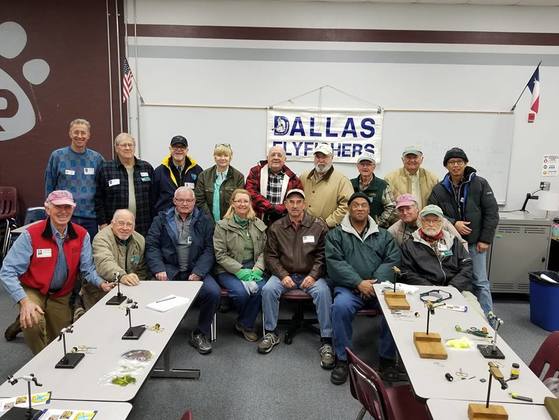 Back to Top
Angler Education Program | Texas Angler Educators Facebook
Learn to Fish Videos | Texas Aquatic Science | TPWD Fishing Information
Volunteer Portal | In Memoriam | Staff Contacts
Back to Top
Click to edit this placeholder text.
Angler Education Instructor Workshops, Fishing Events, Fly Fishing Events, Texas Freshwater Fisheries Center, Sea Center Texas
Back to Top

|